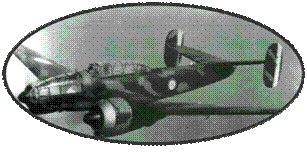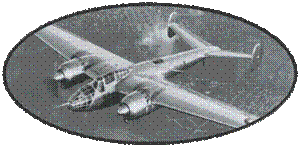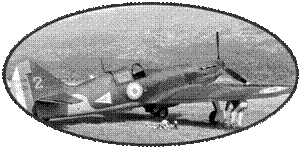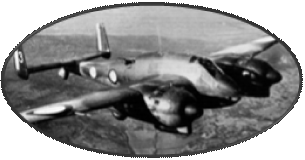The Bristol Blenheim has
its origins in the Bristol 142 twin-engine fast transport. This
transformation of civil aircraft into an average bomber was in response
to a program launched on July 9, 1935 by the British Air Ministry.
This involved a two-seater bomber powered by Aquila or Mercury engines
and capable of carrying 450 kg of bombs over 1,600 km.
The transformation consisted
in raising the wing of the Bristol 142 of 41 cm which made it possible
to install a ventral bomb bay which can receive 4 bombs of 110 kg
or 2 bombs of 225 kg. The surface of the stabilizer is enlarged,
and each elevator receives a trim-tab. The drift is lengthened by
20 cm. The rear wheel becomes retractable. The front of the fuselage
is modified to accommodate a 7.7mm Browning bomber and gun and the
study incorporates a semi-retractable dorsal turret. The weight
of the device in charge increases by 25%.
The first tests of the aircraft
being satisfactory, the Ministry of Air passes a first order of
150 aircraft without resorting to new prototypes. The new device
takes the designation "Blenheim".
The first series aircraft
made its first flight on June 25, 1936 and an additional 434 aircraft
were ordered in December of the same year. The pace of production
is sustained, since 25 Blenheim leave the plant every day the following
year.
The Blenheim Mk I, the first version of the series, is powered by
two Bristol Mercury VI-S.2 840 hp that allow it to reach 452 km
/ h at 3 657 m. The aircraft undergoes some modifications: the engines
are replaced by Mercury VIII, the propeller pans are removed and
the rear wheel becomes fixed. The crew now includes 3 men: a pilot,
a navigator-bomber and a radio-gunner. The weaponry consists of
a 7.7mm Browning machine gun in the left wing and a 7.7mm Vickers
K in the dorsal turret. The first series aircraft was operational
at the RAF on March 10, 1937. During the Munich crisis, the Blenheim
MK1 already equipped 15 Squadrons of the RAF. Two hundred Blenheim
MK1 were converted into escort fighters with the addition of 4 Browning
7.7-guns in the Ventral Gondola. Very vulnerable as a day hunter,
he proved effective as a night fighter equipped with radar.
These were replaced in September
1939 by the Blenheim MK IV. This is a Blenheim Mk I with the front
part of the fuselage modified and equipped with the Blenheim II
wing which has additional tanks. Several sub-versions are derived:
we can mention the 68 Blenheim MK IV L, simple transformation of
a MK I in MK IV without change of wing or the 60 Blenheim IV F,
night hunters
The Blenheim IV in "Standard"
version, is powered by Mercury XV engines of 920 hp. He can now
carry 145 kg of under-wing bombs. The armament is reinforced with
the addition of a Vickers K mobile machine gun in the front and
a rear-facing Browning machine gun, installed in a glass gondola
under the front of the fuselage. A dorsal turret equipped with two
machine guns is installed on the latest devices. Other combinations
are tried over production or directly in unit.
The Bristol company offers
in January 1940, a version of the Blenheim IV designed for tactical
support. The front fuselage receives 4 7.7mm Browning machine guns
with 1000 rounds each. The protection of the cockpit is reinforced
by the addition of armor plates, and it is equipped with a Bristol
B.X dorsal turret armed with 2 Browning machine guns. The engine
is entrusted to Mercury XVI more efficient at low altitude Even
before it goes into production, the aircraft is modified to be used
either in tactical support or as a bomber at very high altitude.
For this, the front part becomes interchangeable: for missions at
high altitude, the front is glazed in its left side to install a
bomber-browser, which can sit in the fairing added at the bottom.
This one receives 2 Browning machine guns pulling backwards. The
engines are Mercury XV or XXV 830 hp, power now insufficient for
a device whose mass now reaches 7700 kgs ... 3286 Blenheim IV will
be built
The Blenheim V receives the
front part of the High Altitude version and Mercury XXV or XXX engines.
940 of these devices are built until 1943.
The Blenheim was used until
the end of 1943. These performances are now out of date, the cantone,
at the end of their career, on theaters of operations in Greece,
North Africa or the East.
.













